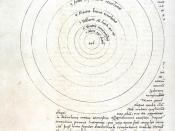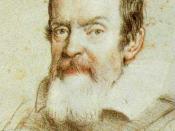Throughout the time before the sixteenth century, people had a firm belief in Ptolemaic system of the universe, which said that everything revolved around the Earth. In the sixteenth century, the Polish astronomer Copernicus presented the first serious challenge to this system, promoting a heliocentric universe. This claim led scientists to reform how conclusions were met through the scientific method. With the invention of the printing press during the fifteenth century, these new ideas were able to be mass produced and became available to everyone, leading to the establishment of many societies and ways of thinking.
Despite scientists observing the Ptolemaic system's many flaws, no one until Copernicus made a significant challenge to the system. Copernicus hypothesized that the Sun stood at the center of the universe and that the Earth moved in circular orbits around it. In 1543, his treatise On the Revolution of the Heavenly Spheres, which explained all of his ideas and theories, was published and denounced on the charge that it was illogical, unbiblical, and un-Christian.
After Copernicus' death, Tycho Brahe set up the most modern observatory in Europe and collected lots of accurate data about the universe, concluding that the planets revolved around the sun, but the Earth was stationary. After his death, this collected data was used by one of his assistants, Johannes Kepler, to develop the three laws of planetary motion. However, it was not until Galileo Galilei offered them visual proof of the planets revolving around the sun did people start to believe these ideas. In 1632, he published Dialogue on Two Chief Systems of the World, immediately getting in trouble with the Catholic Church and placed under house arrest.
With the development of the heliocentric theory, scientists began to argue over how to come up with a good conclusion...


